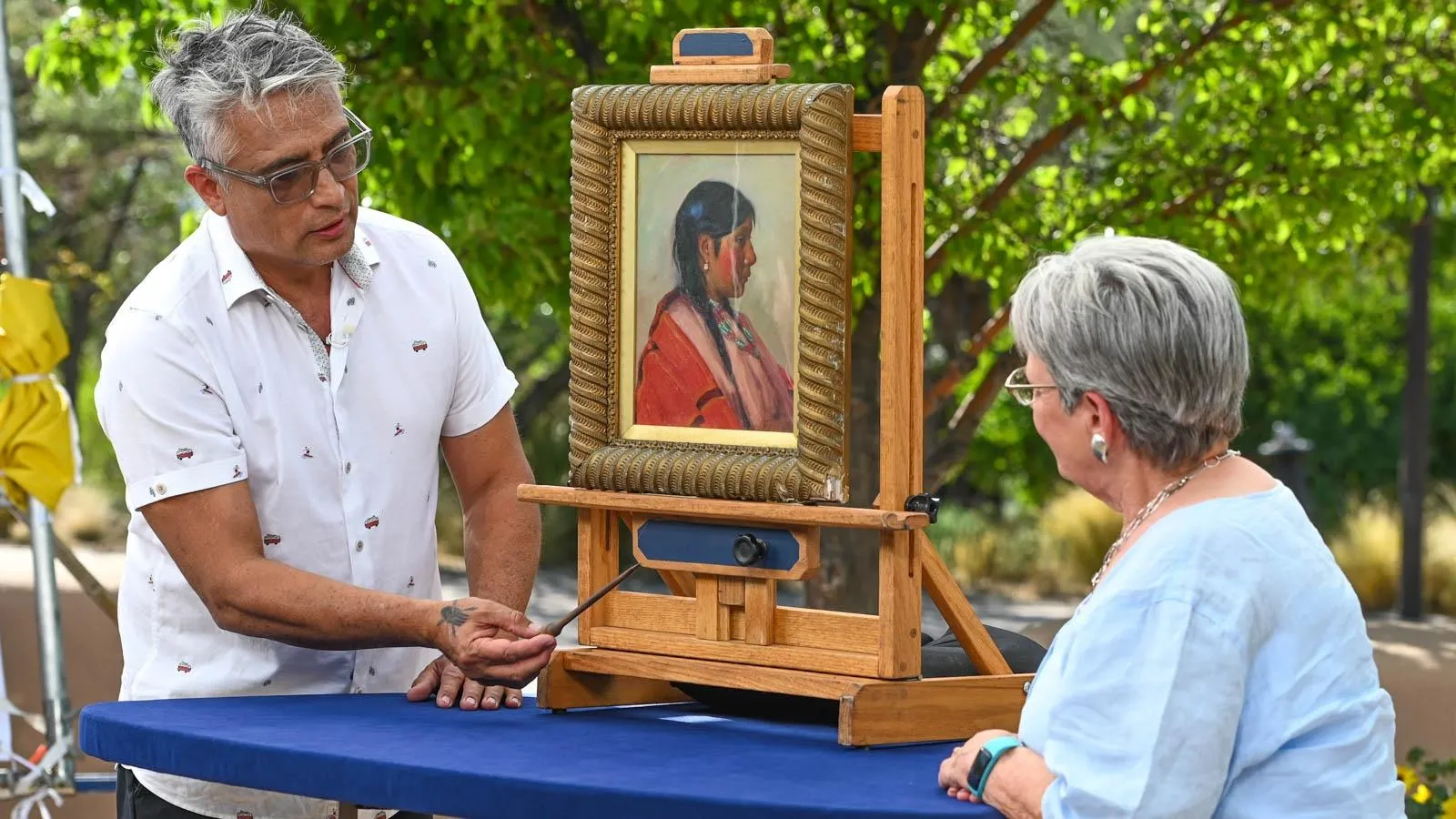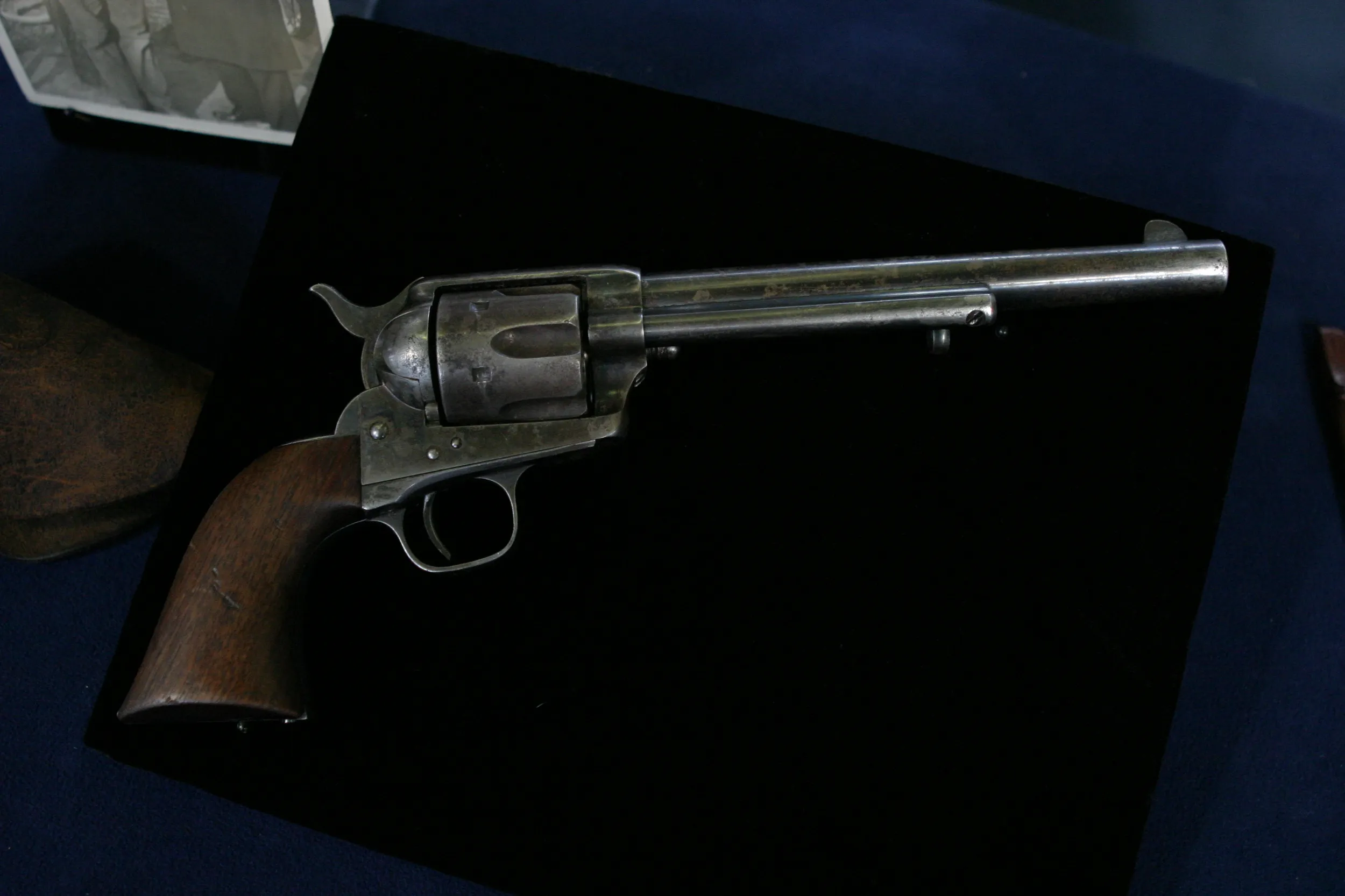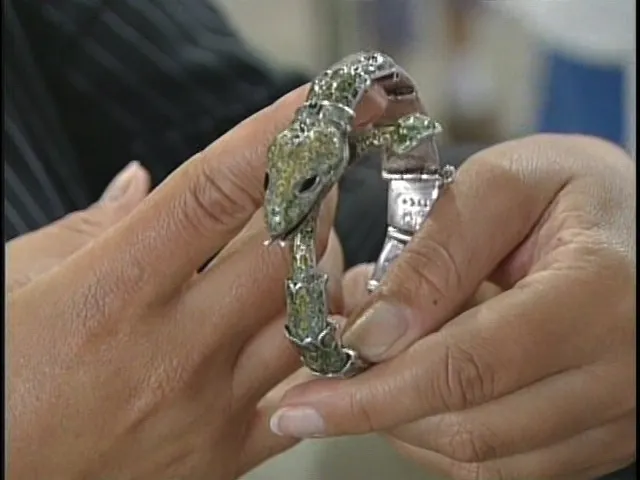GUEST: My husband was in law enforcement, and in his spare time, kind of a passion of his was to hunt meteorites. He passed in 2010, and so this was one of the things that he always wanted to find out more about, and to see how much it was worth. 'Cause he collected a lot of meteorites over time. The first one he brought home was a, a little tiny one that he wasn't sure what, if it was real or not. He used to call 'em "meteo-wrongs."
APPRAISER: (laughs)
GUEST: So he would, he would go home and, and try to experiment with them to see if they were real. His collection was large-- he had 'em from really little to, you know, pretty good size. This was the largest one that he found.
APPRAISER: So do you know where your husband found it?
GUEST: Uh, he found it in Glorieta, New Mexico.
APPRAISER: How far is Glorieta from Santa Fe?
GUEST: About 14 miles.
APPRAISER: The Glorieta Mountain Fall is a very famous meteorite fall. When a meteor is heading for Earth, it starts to break apart.
GUEST: Mm-hmm.
APPRAISER: And then when it hits the ground, becomes a meteorite, it becomes something on the ground. And it scatters quite a big field. You can find little bits. You can find larger specimens. The original fall specimens were first discovered in 1884, and some large specimens were found, but that doesn't mean that many others weren't scattered throughout the area. So you thought he found this when?
GUEST: Uh, 2008.
APPRAISER: So it's amazing that people were still finding specimens that far after the original fall.
GUEST: Right.
APPRAISER: It's what is known as a pallasite. It's a type of a stony iron. And that comes from the fact that there are stones and it's also, there's iron. The little crystals we can see is olivine, and then the metal is iron and nickel. If you took a magnet to it, it would attract a magnet. Of all the meteorites that are found, only less than one percent are, are stony irons. So that makes it rare. But what makes it even rarer for the Glorieta Mountain Fall is because they range from iron, to just a few crystals, to kind of loaded with crystals. You can see some of the crystals on the surface.
GUEST: Mm-hmm.
APPRAISER: Normally, what a collector might do is cut it into thinner sections, and then you slice it and polish it. You would see clearly the enclosed crystals, and would be able to see through them. And it would give these great kind of, great, greenish kind of colors.
GUEST: Mm-hmm.
APPRAISER: What's wonderful about this is that nobody's done that. I'm 90-plus percent confident this is from the Glorieta Mountain Fall.
GUEST: Mm-hmm.
APPRAISER: To be sure, you'd have to take it to a university that has a lab that would be able to do specific, uh, tests on it. And the reason they could do that, again, because the, the Glorieta Fall, not only is it a stony iron, but it's a rarer class of stony iron. So it's a rare class within a rare class.
GUEST: Oh, okay.
APPRAISER: So it's, it's, uh, very well-known for that reason, because of its chemical makeup. I can't imagine how your husband must have felt finding these things, 'cause he's out in the field, and that kind of endorphin rush you get.
GUEST: Right, right.
APPRAISER: Do you remember co, him coming home and...?
GUEST: Oh, he used to tell me all the time, "This is the first time that this star has touched human hands."
APPRAISER: Wow. I tried to weigh it. We didn't have an, a super-accurate scale, but I'm thinking it's around 1,300 grams.
GUEST: Okay.
APPRAISER: And as such, I would say we're looking at a value of, for insurance purposes, $20,000.
GUEST: Wow.
APPRAISER: And it's just a fabulous...
GUEST: Wow. That's wonderful.
APPRAISER: (laughing)
GUEST: He would have been jumping up and down right now. He really would have.
APPRAISER: Feel free to do it.
GUEST (laughing): Yeah, thank you. He would have loved it.








